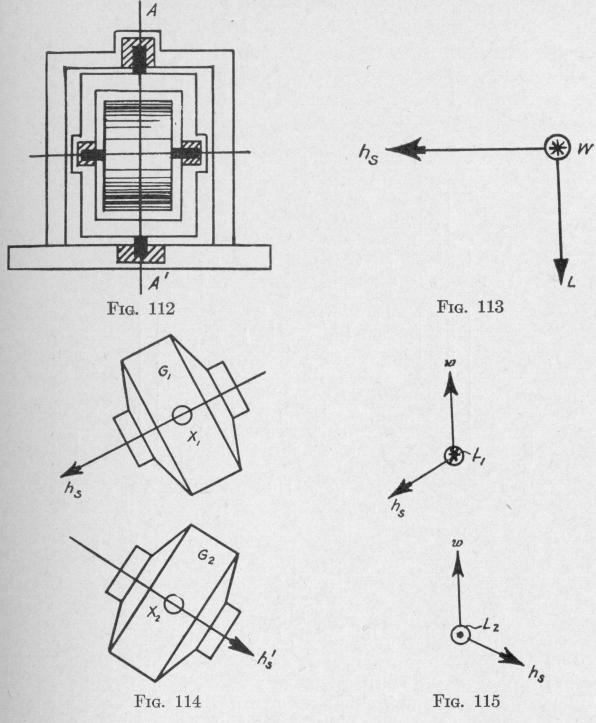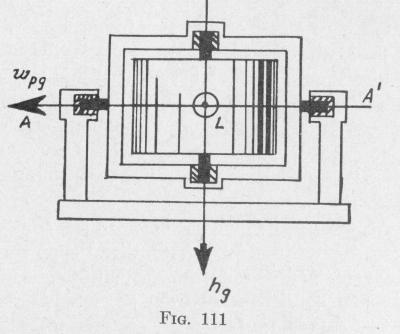140 ANTI-ROLL DEVICES FOR SHIPS
89. The Effect of a Spinning Gyroscope on the Rolling of a Ship. - Consider a ship on which is mounted a gyro-wheel spinning about a vertical axis. Let the frame supporting the gyrowheel be capable of rotating about an athwartship axis. When the ship rolls, the gyro-axle precesses about this axis AA', Fig. 111. The effect of the precession of the gyro-axle on the rolling motion of the ship is the same as that of the gyroscope on the motion of the pendulum considered in the preceding Article. If the gyroaxle precesses freely, there is zero damping effect; if the preces
sion is opposed by a moderate frictional torque, damping of the amplitude of roll is produced. The amount of damping would be maximum if the torque opposing precession at each instant were proportional to the speed of precession at that instant. Steering is not affected by a gyro-wheel with vertical spin-axis. The period of roll of the ship is decreased, (Art. 86).
A gyro-wheel spinning about an athwartship axis and capable of rotating about an axis AA' perpendicular to the decks of the ship, Fig. 112, will precess back and forth about this axis as the ship rolls from side to side. As in the case of the gyro with vertical spin-axle, the amplitude of roll of the ship will be damped if the precessional motion be opposed by a frictional torque.
Suppose the direction of spin is that represented by the line hs, Fig. 113. Then while the ship is rolling to starboard with angular velocity represented by the symbol w, the gyro-frame and ship will be subjected to a torque about an axis perpendicular to hs and w in the direction represented by the line L, (Art. 36). Owing to this toraue the shin steers to starboard. Similarly a roll to
THE INACTIVE TYPE OF GYRO SHIP STABILIZER 141
port causes the ship to steer to port.* For this reason a single gyro-wheel with spin-axle horizontal cannot be used to stabilize a rolling or pitching ship.
This yawing can be prel ented by using two gyro-wheels G, and G2 that are spinning in opposite directions about horizontal
athwartship axes, Fig. 114. These gyro-wheels are capable of rotation about vertical axes x, and x2, respectively. When the ship rolls, the two gyros precess in opposite directions about these axes. As the spin velocities are also in opposite directions, the torques developed by a roll of the ship are in the same direction.
* Suyehiro, " Yawing of Ships," Trans. Inst. Nav. Arch., 1920, pp. 93-101.

